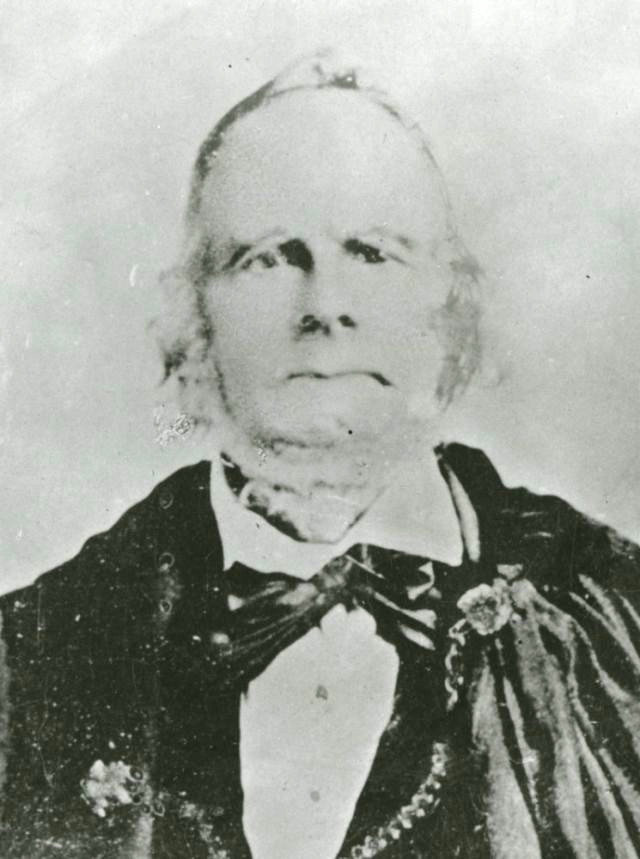Zera Pulsipher
(1789-1872)


D&C 124:138
By Susan Easton Black
“I married a very agreeable companion,” wrote Zera of his first wife—
Lived with her about one year when she died leaving one child which we named Harriet. Weeks after her death, she came to me in vision and appearing natural looked pleasant as she ever did and sat by my side and assisted me in singing a hymn—beginning thus: “That glorious day dawning nigh when Zions Light Shall Shine.”1
In the summer of 1831, Zera “heard a minister [speak of] an ancient record or Golden Bible in Manchester near Palmyra which remark struck me like a shock of electricity. The same time I thought it might be something that would give light to my mind upon principles that I had been thinking of for years.”2 A few months later, Elder Jared Carter preached before a large congregation and shared the message of the Restoration. Zera, a Baptist minister, who sat in that congregation, stood and said to the assembly, “We had been hearing strange things [which] were of the utmost importance to us.”3 Zera received a vision of the truth of Elder Carter’s message:
All at once there seemed to be a ray of light from heaven which caused me to stop work for a short time, but soon began again. Then in a few minutes another light came over my head which caused me to look up. I thought I saw the Angels with the Book Mormon in their hands in the attitude of showing it to me and saying “This the great revelation of the last days in which all things spoken by the prophets must be fulfilled.”4
After entering baptismal waters in January 1832, Zera had a great desire to share the message of the Restoration with others—
“Where on earth are you going?” his wife asked.
“I don’t know, only that I’m going preach the gospel. The Lord will show me where to go. I am going where He guides me.”
“How long will you be gone?” she inquired.
“I don’t know. Just long enough do the work the Lord has for me to do.”5
Wilford Woodruff listened to the preaching of Zera: “He preached to the people for an hour and a half. The spirit of God rested mightily upon him and he bore a strong testimony of the divine authenticity of the Book of Mormon and of the mission of the Prophet Joseph Smith. I believed all that he said. The spirit bore witness of its truth.”6
In the spring of 1835, Zera and his family gathered with the Saints to Kirtland, Ohio. Three years later, Zera had been named one of the Seven Presidents of the Seventy and had settled in Adam-ondi-Ahman. He wrote of the persecution that occurred in that Latter-day Saint settlement:
The people being much opposed to our faith decided to drive us out of the country. … They began to burn houses and then go to the governor and swear that we had drove them out of their settlements and burned their buildings. … I never slept many nights while I was there without having my sword and pistols by my bed and frequently called by the sound of the Bugle to defend the people from mobs.7
Zera fled with his family from Adam-ondi-Ahman across the Mississippi River to Illinois. After residing a few years in Bear Creek and then in Nauvoo, Illinois, he crossed the loess hills of Iowa to reach the Winter Quarters encampment. By spring of 1847, he had journeyed on to the Salt Lake Valley.
At the October 1856 general conference, Heber C. Kimball called Zera “‘to awake to my duty.’ … I soon saw that Brother Kimball was right and that I was holding a high and responsible station in the church as asleep with many others.”8 Rather than be angry by what Heber had said, Zera became more diligent in fulfilling his assignment. “I was frequently out four or five evenings a week besides day meetings,” he wrote. But in 1862 Zera overstepped his authority and “transcended the bounds of the Priesthood in the ordinance of sealing, for which he was cited to appear before the First Presidency of the Church.”9 He was released as a General Authority.
For the next ten years, Zera resided in southern Utah in the small towns of Santa Clara and Hebron. He died on January 1, 1872, at age eighty-two.
1. Zera Pulsipher, “History of Zera Pulsipher as Written by Himself,” typescript, 1. L. Tom Perry Special Collections, Harold B. Lee Library, Brigham Young University, Provo, UT.
2. Pulsipher, “History of Zera Pulsipher,” 5.
3. Pulsipher, “History of Zera Pulsipher,” 6.
4. Pulsipher, “History of Zera Pulsipher,” 6.
5. Milton V. Backman Jr., The Heavens Resound: A History of the Latter-day Saints in Ohio, 1830–1838 (Salt Lake City: Deseret Book, 1983), 104.
6. Matthias F. Cowley, Wilford Woodruff: History of His Life and Labors (Salt Lake City: Bookcraft, 1964), 33.
7. Cowley, Wilford Woodruff: History, 12.
8. Heber C. Kimball, “Reformation—A Test at Hand to Prove the Saints,” Journal of Discourses, 4:140.
9. Andrew Jenson, LDS Biographical Encyclopedia, 4 vols. (Salt Lake City: Andrew Jenson History Company, 1901), 1:194.
Additional Resources
- Biography of Zera Pulsipher (josephsmithpapers.org)
